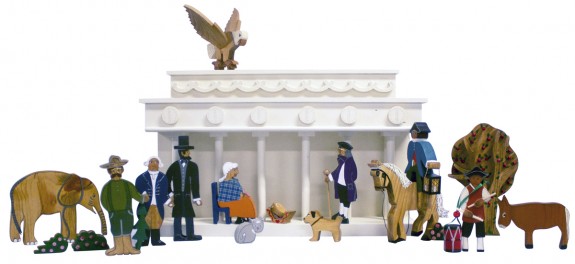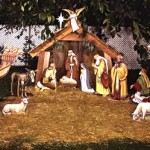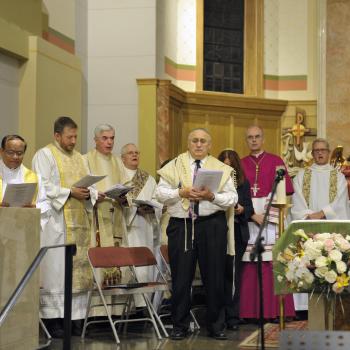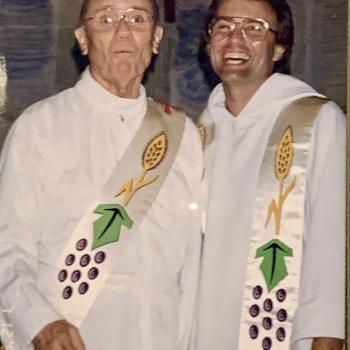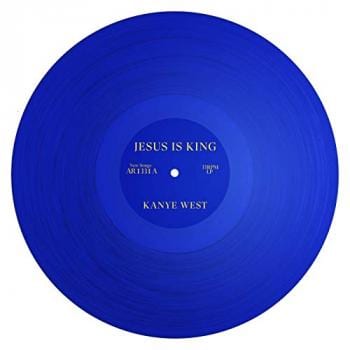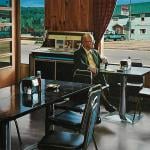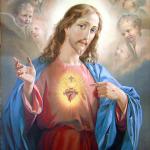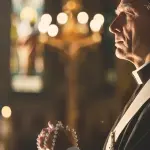Over at HuffPo, Jesuit Mark Bosco looks at the lively and often creative tradition of the Christmas creche, and illustrates it with examples from the James and Emilia Govan Creche Collection at the Loyola Museum of Art. (Shown above: the Lincoln Memorial as a Nativity setting, featuring an eagle as angel, and an elephant and a donkey, created by Hanneke and Les Ippisch, crafted in Montana of wood, paper, wire, ribbon.).
The devotion to the infancy of Jesus, precisely as encountered in the Nativity crèche, was inspired by Saint Francis of Assisi. In 1223, Francis asked permission from Pope Honorius III for a special observance of Christmas. Having received the pope’s consent, Francis set up a manger in a mountainside cave outside of Assisi, using a wooden infant Jesus and a live cow and donkey, so that the community could better encounter the simplicity of Christ’s birth. Francis saw the need to visualize in a tangible manner the events surrounding Christ’s birth in a medium that encourages participation by everyone — the artist and the laborer, the wealthy and the poor, the clergy and the laity.
The devotion to the crèche grew over the next centuries. The heyday — one might call it mania — of the crèche was in Naples during the 16th and 17th centuries. The first recorded account of a crèche for a private home was for that of the Duchess of Amalfi in 1567. Her crèche was an extravagant 167 figures. Soon afterward, the crèche became common, if less elaborate, in private homes. Variations of it spread over Europe, but in each place it was rendered, the style of the crèche would be molded from the available resources and made by local artisans.
As Western European culture expanded to the Americas, Africa and Asia, the crèche followed as each culture made the Nativity scene its own. Wherever the crèche is rendered, artists give the figures features of their own cultures as on of the first artifacts of Christian enculturation. Whether highly stylized or folkloric, the crèche suggests that the human story and the divine story intersect and develop together.
Read more and check out the fascinating slideshow at the HuffPo link.

